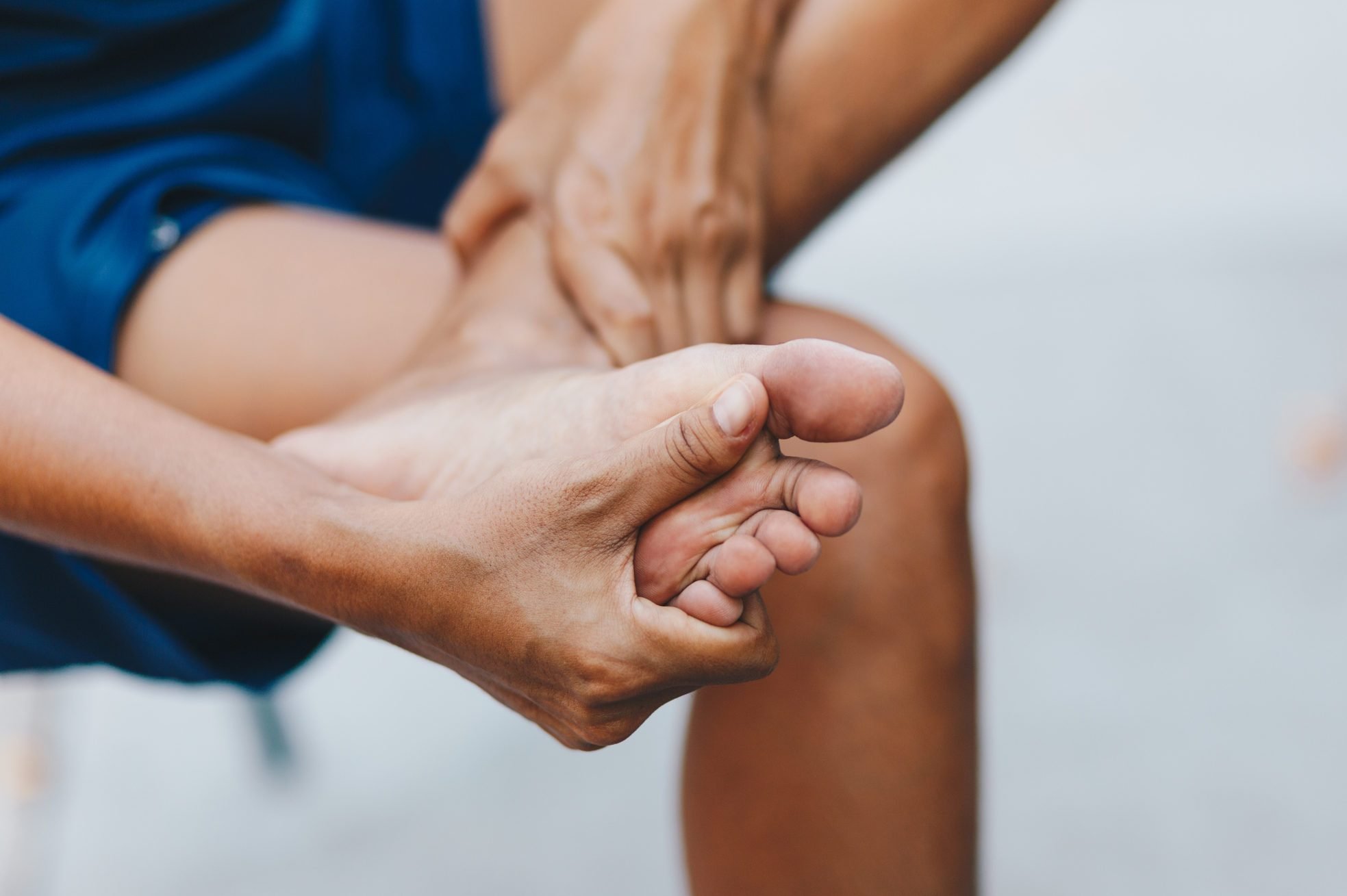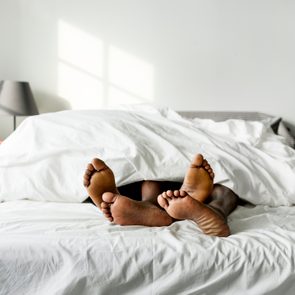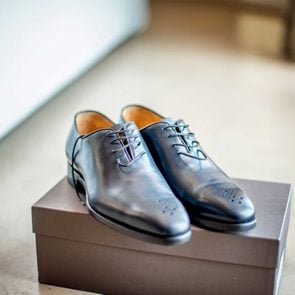Here’s Why You Might Have Pain in the Ball of Your Foot
Updated: Mar. 22, 2021
You may not think too much about your feet—until every step hurts. Here are common causes of ball of foot pain, known as metatarsalgia; the symptoms to watch for; and how to treat it.
The agony of ball of foot pain
On a day-to-day basis, you probably don’t give your feet much thought. But if you stop and think about them, it’s sort of wild how much they do.
They’re the only part of the body that touches the ground when we walk, and when we do anything that involves being upright—standing, walking, running, jumping, pretty much any activity where we use our legs—they’re always there supporting us.
This is why when we have any sort of foot pain, it can seriously get in the way of us doing the things we enjoy. Heck, it can stop you from doing mundane, necessary things like walking to the bathroom or driving your car.
Pain in the ball of the foot—the area between the toes and the arch—is known as metatarsalgia, a blanket term that just means pain and tenderness in the bottom of the foot. There are a lot of underlying conditions that can cause it, and it’s important to figure out exactly what’s going on to be able to treat it properly. (Here’s what causes top of foot pain.)
Who can get ball of foot pain?
Anyone can get ball of foot pain, but a few specific factors can make it more likely to strike. Essentially anything that puts excess pressure on the front of your foot can increase your risk. Engaging in repetitive activities that put pressure on the ball of the foot—like ballet, running, and even yoga—wearing high heels, and having extremely high arches, all increase the chances of ball of foot pain. Injuries, existing foot conditions like bunions and hammertoes, excess weight, and age, are all risk factors, too.
While many underlying causes of ball of foot pain resolve with rest and at-home treatments, like taking nonsteroidal anti-inflammatory drugs (NSAIDs) such as ibuprofen and naproxen, some need to be addressed by a doctor and treated. Otherwise, they’ll get worse over time and may progress to the point that they interfere with life, says Brian Burgess, DPM, a board-certified podiatric surgeon at Illinois Bone & Joint Institute.

Causes of pain in the ball of your foot
If your ball-of-foot pain is getting worse, even with rest, or is just extremely painful, reach out to a doctor. It’s worth getting a diagnosis not only to get rid of the pain, but also so that you can keep your feet healthy and functioning well long-term.
From foot arthritis to nerve damage and tendinitis, here are the main causes of pain in the ball of the foot, treatment options, and tips to prevent them from plaguing you in the future. (These foot symptoms can reveal signs of disease.)
Joint misalignment
The metatarsals are the long bones in the midfoot that attach each toe to the ankle. If something is throwing off the joint, it can cause swelling and pain in the ball of the foot that’s worse when you walk. Metatarsal joint pain occurs when something is causing a misalignment in a joint, causing pressure and damage to the cartilage over time.
Rheumatoid arthritis, which can cause inflammation and hammertoes, can cause this misalignment. Osteoarthritis, usually in the big toe, can make the joint stiff and result in an abnormal range-of-motion, ultimately putting pressure on the joint and causing pain.
Other structural abnormalities in the foot, including hammertoes and bunions, can also cause joint pain in the ball of the foot.
(Here’s a guide to bunion pain relief.)
Nerve damage
Long-term irritation of the nerves that run between the toes can cause growths of nerve tissue, known as neuromas, to form. They can grow between any toes, but are most common between the third and fourth toes. This condition is called Morton neuroma.
Neuromas can cause a mild aching pain at first and progress into a sharp stabbing pain, sometimes with a tingling or burning sensation that radiates into the toes, says Zachary Flynn, DPM, a podiatrist and fellowship-trained foot and ankle surgeon at Phoenix Spine & Joint in Arizona. The other hallmark symptom is feeling like you’re stepping on a marble in between the bones.
Neuromas are more common in women. Having a foot type that causes instability in the toe joints, like being extremely high-arched or flat-footed, can increase your risk of developing a neuroma. Trauma to the nerve, repeated stress from weight-bearing activities, high heels, and shoes that squeeze the toes together can all contribute to neuroma formation.
(These are the best walking shoes for your feet.)
Plantar plate injury
The plantar plate is the ligament on the bottom of the foot that essentially attaches your toe to the metatarsal, Dr. Flynn says. “The ligament straps the toe in place so it doesn’t elevate or cross over.” If the ligament is injured, it can cause the toe to move up or to the side, causing pain in the area where the toe attaches to the foot.
Dr. Flynn says the symptoms can range from swelling or a dull ache or throb to a sharp, stabbing pain that feels worse when you put stress on the joint. Some patients say it feels like they have something underneath their toe, he adds.
Plantar plate injury is more common in people who wear heels or other types of shoes that increase the load on the forefoot and put a strain on the ligament, Dr. Flynn says. Activities that put pressure on the ball of the foot, like certain poses in yoga, can also contribute and cause inflammation in the plantar plate. Traumatic injuries, like stubbing a toe or hitting it in a way that pulls it upward, can also strain the ligament.
Conditions like bunions and hammertoes, which put pressure on the bottom of the foot, can also increase the risk of plantar plate injury.
(This is what you need to know about plantar fasciitis.)
Sesamoiditis
A sesamoid is a bone that does not connect to any other bones, but instead connects to tendons or is embedded in a muscle. Two small sesamoids in the human body are located in the underside of the forefoot near the big toe. Sesamoiditis is a condition that happens when these sesamoids break or the tendons around them become irritated or inflamed (tendinitis).
Sesamoiditis pain is generally located in the ball of the foot under the big toe. If it’s caused by a fracture, the pain will develop suddenly; if it’s caused by irritation to the surrounding tendons, pain will develop gradually. The condition can also make it painful to bend and straighten your big toe.
Just like other forms of tendinitis, sesamoiditis is an overuse injury. It’s common in people who do sports or activities that involve repetitive pressure on the mid foot, like running and ballet dancing, people with high arches, and those who frequently wear high heels. (Here are the best flip-flops with arch support.)
Fat pad atrophy
“We have fat pads on the bottoms of our feet, and they can atrophy as we age,” Dr. Flynn says. Think of these pads as natural cushioning to protect the bones, soft tissues, blood vessels, and nerves from everyday forces that come with walking, running, and any other activity you use your feet for. As the natural cushioning wears away, you may experience increased sensitivity on the ball of the foot.
This can cause foot swelling and pain that worsens with weight-bearing activities and during long periods of standing. This sensitivity can also increase the risk of developing overuse injuries like neuroma, sesamoiditis, and joint misalignment, which lead to foot pain as well.
The biggest risk factor for fat pad atrophy is age—all those steps you’ve taken throughout your life start to wear away at the pads more and more. Some autoimmune conditions, like rheumatoid arthritis and lupus, high arches of the foot, diabetes, being overweight, foot injuries, and repetitive sports and activities, can all increase foot fat pad atrophy as well.
(Here are the best shoes for neuropathy.)
Freiberg’s disease
Freiberg’s disease is most commonly diagnosed during adolescence and through the 20s. It’s caused by damage to the growth plate, which disrupts the blood supply and leads to avascular necrosis, or death of the bone tissue. This results in the metatarsal flattening and collapsing, causing pain.
It is a rare condition that causes pain and stiffness in the front of the foot, usually in the second or third metatarsal, often leading to a limp. Swelling, limited range of motion, and tenderness are also common symptoms. Similarly to a plantar plate injury, it may cause the sensation that there’s something under the toe.
Experts believe genetics, lifestyle, and environmental factors all contribute to whether a person will develop it.
(These are the foot symptoms that can reveal diseases.)
How doctors diagnose ball-of-foot pain
If you’re experiencing ball of foot pain, the best way to figure out what’s going on is to see a podiatrist. The doctor will take your medical history and do a physical exam, which includes things like poking and prodding a little bit, isolating the area of pain, and testing tendon and muscle strength, Dr. Flynn says.
Since it can be difficult to know the exact cause of ball of foot pain, they may do some scans to help narrow it down, including an X-ray, MRI, or ultrasound, depending on what they suspect may be going on.
(These are the ways podiatrists say you’re killing your feet.)
Treatment options for ball of foot pain
The first line of treatment for all foot pain is conservative at-home measures like taking NSAIDs, avoiding activities that make the pain worse, icing, and switching to more supportive shoes. No matter the cause of your foot pain, it’s likely a doctor will suggest trying these things first to see if they help.
Cushioned shoes
Making smart footwear choices can be one of the best treatments for all causes of ball of foot pain. Wearing supportive shoes with plenty of cushioning can sometimes be enough to take the pressure off the foot and relieve many causes of pain. Shoes with thicker soles and low, rounded heels may also make a difference. (Avoid these mistakes to prevent foot shoe pain.)
Orthotics
Foot orthotics, or inserts that go into your shoe to provide extra support and reduce pressure on the foot, can also help treat most sources of ball of foot pain. These can be hard to shop for—there are so many OTC options at the drugstore. The best thing to do is to ask your doctor to point you in the right direction. He or she may recommend prescription orthotics, which are custom made to counter structural abnormalities.
Injections and surgery
Most overuse injuries can be solved with conservative measures, Dr. Burgess says. But certain conditions may require heavy-duty treatment.
Injections with a corticosteroid/anesthetic mixture may be helpful for both Freiberg’s disease and neuromas.
Occasionally, if nothing else works for a neuroma, surgery may be a good option, though Dr. Flynn cautions that most of the time, neuroma surgery involves cutting the nerve, which results in permanent numbness, which poses its own problems (like the fact that you won’t sense if you get a wound on your foot).
Plantar plate injury may also require surgery to repair. “Treatment is difficult because conservative treatments often fail—it’s really difficult to get it to heal,” Dr. Flynn says. He estimates that about half of people he sees with plantar plate injury end up needing surgery.
Joint misalignment and conditions like hammertoes and bunions may also need to be surgically treated if conservative options don’t ultimately get rid of the pain. And it’s better to do that sooner rather than later, since those things typically get worse over time, Dr. Burgess says.
Prevention of bottom of foot pain
Wearing good footwear can help you avoid a lot of the ball-of-foot-pain culprits. Think: cushioned sneakers with arch support, not flimsy flip-flops with barely anything between your feet and the ground.
Orthotics can also be helpful to wear before issues arise, Dr. Burgess says. He recommends going to a specialty running shoe store to get some advice on both shoes and orthotic inserts. “If you’re at a store where they can properly fit you, more likely than not they have quality devices that will be supportive,” he says.
But if you’re looking for shoes and inserts to treat an existing problem, it’s best to ask your podiatrist for a recommendations.
Another great way to prevent any foot pain is to always ease into activity slowly, Dr. Flynn suggests. Many overuse injuries can be avoided by slowly ramping up exercise instead of going full speed ahead on your first day. It’s important to let your feet adapt and get used to the exercise strain if you want to keep them healthy.
The bottom line
Ball of foot pain can be caused by many different things, so it’s important to see a doctor and get an accurate diagnosis. While some causes can be treated similarly—rest, ice, NSAIDs, ditching heels and flip-flops for something more supportive—some may require additional attention. Surgery isn’t very common, but sometimes it is the best option to get your feet feeling good and working well again.
Next, find out what podiatrists won’t tell you.






















